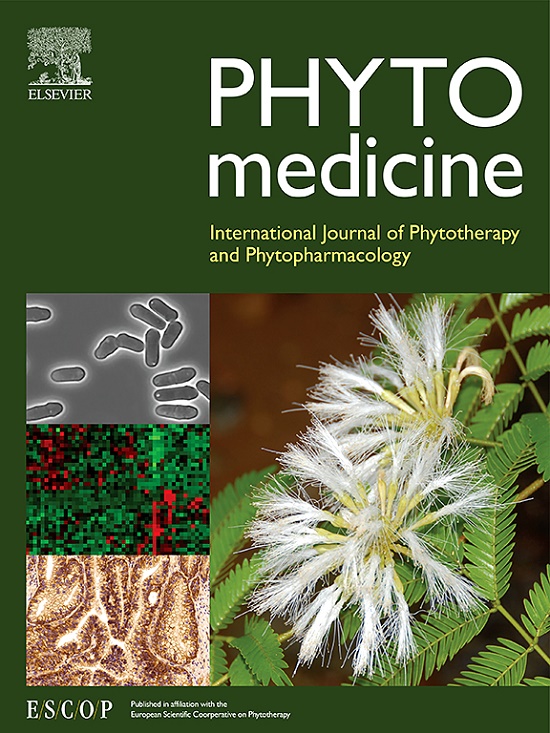Stachydrine hydrochloride reduces NOX2 activity to suppress oxidative stress levels to improve cardiac insufficiency
IF 6.7
1区 医学
Q1 CHEMISTRY, MEDICINAL
引用次数: 0
Abstract
Background
Oxidative stress is a significant cause in the occurrence of cardiac insufficiency. Nicotinamide adenine dinucleotide phosphate (NADPH) oxidase2 (NOX2)-derived reactive oxygen species (ROS) play a pivotal role in oxidative stress-induced excitation-contraction decoupling. Stachydrine hydrochloride (Sta) reduces pressure overload-induced cardiac insufficiency, which may be related to the NOX2-ROS pathway, as demonstrated by our earlier research. However, the mechanism through which Sta specifically affects NOX2 remains unknown.
Purpose
In order to investigate whether Sta plays a cardioprotective role by inhibiting NOX2 activity, we explored the specific mechanism by which Sta improves cardiac function by affecting NOX2-mediated oxidative stress in this study.
Methods
Molecular docking and cellular thermal shift assay (CETSA) were performed to verify whether Sta can bind to individual subunits of NOX2. We induced models of cardiac insufficiency in the compensatory phase (cardiac hypertrophy) by phenylephrine (PE) in vivo and in vitro and treated with Sta and GSK2795039 (NOX2 inhibitor). Cardiac function and structure were observed by echocardiography analysis. We detected the expression and localization of NOX2 subunits and calcium channel proteins, also detected the activities of ROS and NOX2, SOD, and GSH, and observed intracardiac calcium homeostasis and systolic-diastolic function in cardiomyocytes. Secondly, we used adenovirus and adeno-associated virus transfection for cardiac-specific overexpression of NOX2 in vivo and in vitro respectively, and also treated with Sta to observe NOX2 activation indexes and ROS levels, cardiac function and cardiomyocyte function in mice.
Results
Prior to our investigation, we discovered that Sta could bind to NOX2 through molecular docking and CETSA. The findings demonstrated that Sta decreased the expression levels of gp91phox and p67phox, as well as the phosphorylation levels of p47phox, and by preventing p67phox and p47phox from translocating across cell membranes. NOX2 activity inhibition by Sta suppresses ROS production. Sta reduced ROS-induced oxidation of Ca2+/calmodulin protein kinase II and modulated excitatory-contractile coupling via sarcoplasmic reticulum calcium pumps. Cardiac-specific overexpression of gp91phox promotes membrane translocation of p67phox and p47phox, increases NOX2 activity, and promotes ROS generation. Sta inhibition of gp91phox overexpression reduced the membrane translocation of p67phox and p47phox, decreased NOX2 activity and oxidative stress levels, and restored excitatory-contractor-coupled myocardial function.
Conclusions
Our study innovatively verified the key role of NOX2 in cardiac insufficiency. Sta downgrades NOX2’s activity by suppressing the protein level of gp91phox and the membrane transport of p67phox and p47phox, thereby reducing myocardial oxidative stress and playing a cardioprotective role. This study was hoped to support the possibility of Sta as a cardiac function-enhancing drug in the future.

求助全文
约1分钟内获得全文
求助全文
来源期刊

Phytomedicine
医学-药学
CiteScore
10.30
自引率
5.10%
发文量
670
审稿时长
91 days
期刊介绍:
Phytomedicine is a therapy-oriented journal that publishes innovative studies on the efficacy, safety, quality, and mechanisms of action of specified plant extracts, phytopharmaceuticals, and their isolated constituents. This includes clinical, pharmacological, pharmacokinetic, and toxicological studies of herbal medicinal products, preparations, and purified compounds with defined and consistent quality, ensuring reproducible pharmacological activity. Founded in 1994, Phytomedicine aims to focus and stimulate research in this field and establish internationally accepted scientific standards for pharmacological studies, proof of clinical efficacy, and safety of phytomedicines.
 求助内容:
求助内容: 应助结果提醒方式:
应助结果提醒方式:


